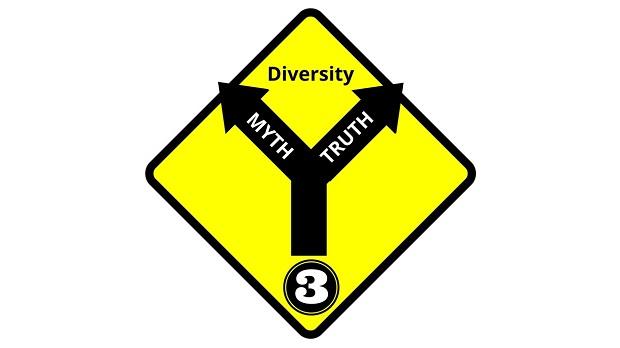
Ask any diversity practitioner if they feel understood, and the most likely answer will be that they do not. Everyone has an idea about what diversity is and what it isn’t. Of course, we are all entitled to our opinions, but too often, our opinions are not facts. This is the third of a five-part series to help dispel some of the myths around diversity work. Last week, I covered Diversity Myth #2: Diversity is all about “them.”
Diversity Myth #3: Diversity is only about differences.
The nature of diversity is difference. As we consider diversity within our organizations, we look at who is in our organization and who is not in our organization. We want to figure out how to get the right blend of differences to satisfy the government, our customers, and our stockholders.
And yet, differences can be contentious. We need to decide which differences deserve our focus. When measuring difference, we have to consider, “Different from whom?” And we all know the answer to that question. The majority population becomes the standard by which we are measuring.
This approach to diversity only causes divisiveness. In its most benign form, it creates the false notion that, “If I look like the majority, then I am not diverse.” It puts the majority population on the defensive, rather than helping them to become advocates for diversity. In its most malignant form, employees from the majority group see visibly diverse people in the organization, and look at them as “filling in boxes.” Diversity now becomes something I must fight against, because it doesn’t include me.
Conversely, if I am not from the majority group, then I am different. When diversity highlights only the ways in which I am different, then I stand out more. Of course, no one wants to feel that they were hired simply because the organization needed to check a box. I am now made to defend myself, my skills, and any promotions that I get. Diversity becomes exhausting, because it has now become just one more systemic issue I must navigate.
Diversity Fact: Diversity is about commonalities as well as differences.
Diversity in organizations is not only about differences; it’s about commonalities as well. We use commonalities to create connections and build relationships. In order to build efficient and effective working relationships, we have to get beyond our initial visible reaction and understand that just because someone may not look like us, or may be from a different background than we are, that there are likely still things we have in common. When we take time to talk to each other, we discover that we have much more in common than we initially thought.
Once we find the commonalities, it can be very tempting to never talk about the differences. I often hear, “Why do we have to focus on the differences? Doesn’t that just cause problems?” Yes. An overfocus on the differences can cause problems, as was pointed out earlier. At the same time, an overfocus on the commonalities leads to conformity, which can come in two forms. The first is when we expect others to yield to our ideas and ways of doing things. The second is when we accommodate others in order to get along within the system. Neither form is conducive to a successful work environment.
Consequently, diversity needs to be a balance between the commonalities and the differences.
It’s important to understand that, “We all want to be respected,” and still know that there are differences in how we show respect.
It’s important to believe that, “We all want to be successful,” and appreciate that we all define success differently.
It’s important to recognize that, “We are all human,” and still grasp the historical and systemic challenges faced by different groups.
When we have a more holistic understanding of diversity, we know that our commonalities lead to connection, and our differences lead to new ways of seeing and experiencing the world. The relationships built on the commonalities, and the new perspectives discovered through the differences, then lead to the creativity and innovation we need in our organizations.
The next time you find yourself focusing only on the differences of diversity, try to find some commonalities. And, when you notice yourself stuck assuming commonalities, ask about some differences.
We find true diversity in the balance of the two.
Next week: Diversity myth #4: Diversity is a win/lose situation.


















